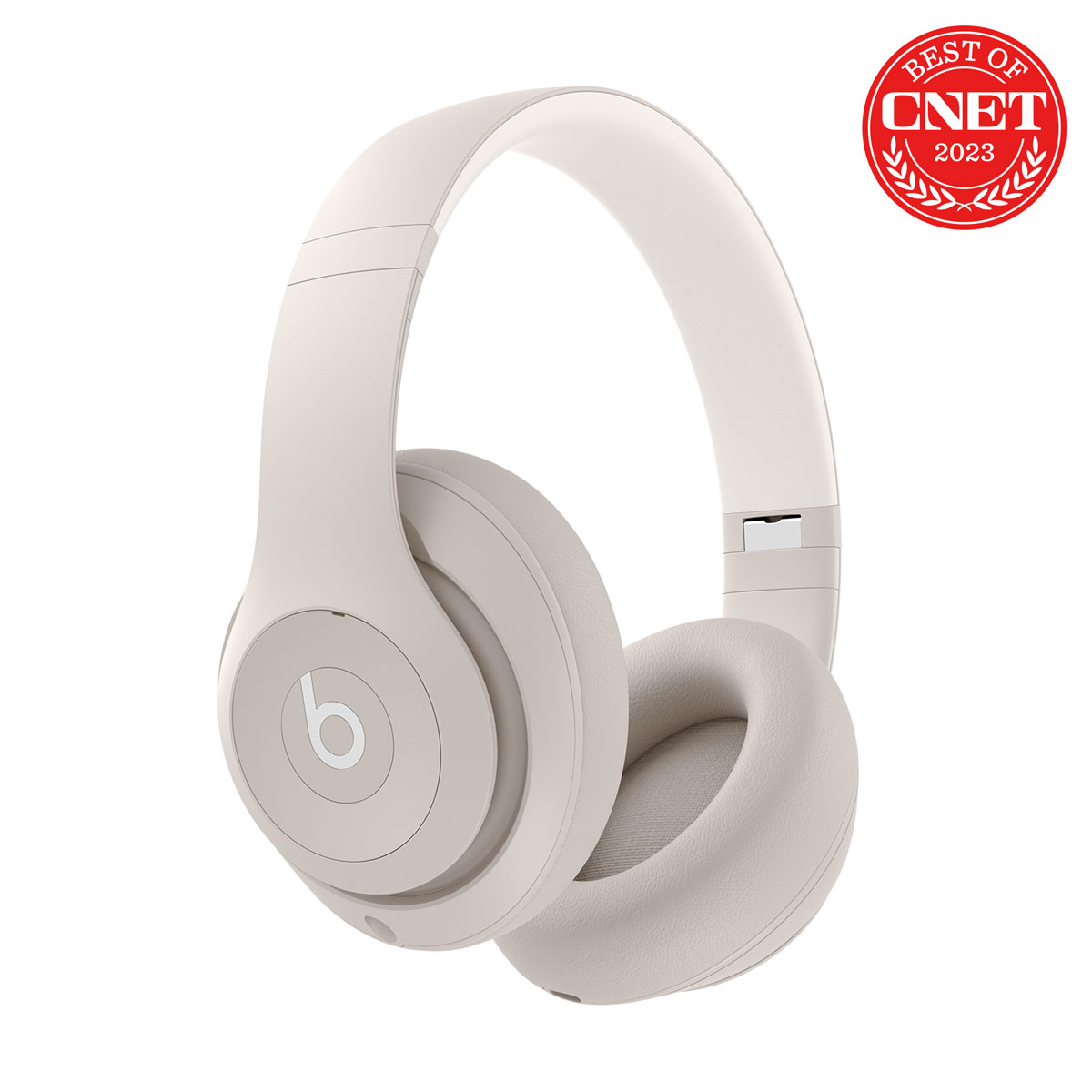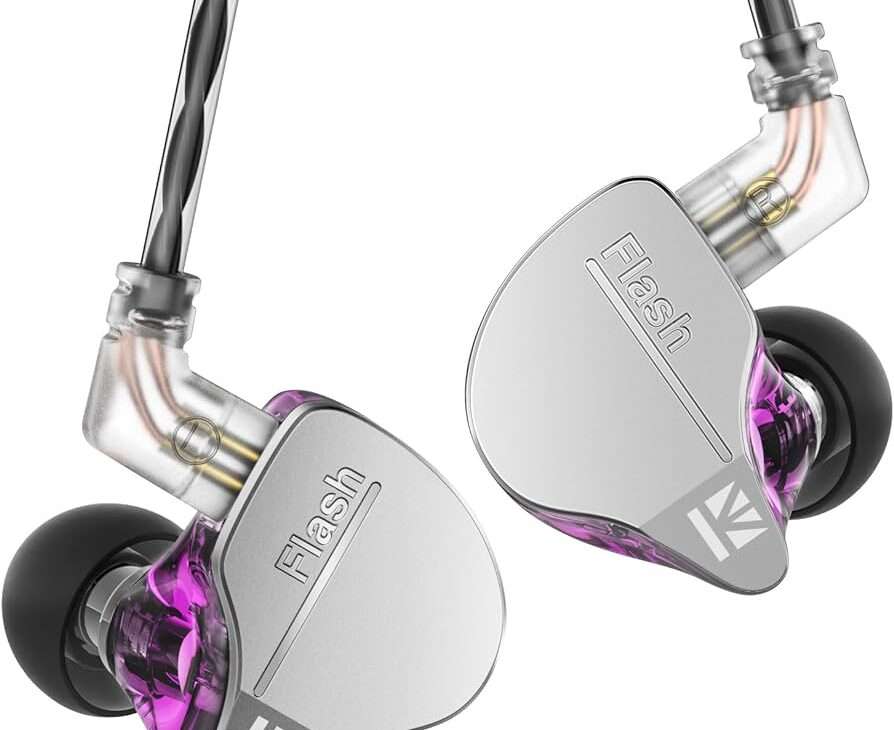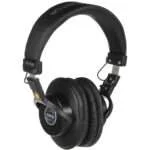Studio headphones with balanced audio deliver accurate sound reproduction. They are essential for professional audio mixing and mastering.
Balanced audio in studio headphones ensures that all frequencies are evenly represented. This makes them crucial for audio professionals who need precise sound quality.
These headphones provide clarity, allowing users to hear intricate details in music or recordings. Their design typically includes high-quality materials and advanced technology to minimize distortion and enhance sound accuracy.
Comfortable ear pads and adjustable headbands are common features, making extended use more bearable. Investing in studio headphones with balanced audio can significantly improve the quality of your audio work, ensuring that the final product is polished and professional.
The Quest For Balanced Audio In Studio Headphones
Finding the perfect pair of studio headphones is crucial for sound engineers. Balanced audio is key to creating high-quality music. Many factors influence the quest for balanced audio. Let’s explore these elements and understand their importance.
Key Elements Of Sound Quality
Sound quality in studio headphones depends on several factors. Here are the key elements:
- Frequency Response: This measures the range of sounds the headphones can produce.
- Impedance: This affects how much power the headphones need.
- Drivers: These convert electrical signals into sound.
- THD (Total Harmonic Distortion): This indicates how accurate the sound reproduction is.
Importance Of Balance In Audio Production
Balance in audio production ensures every sound is heard clearly. It helps in accurate mixing and mastering. Here are some benefits:
- Enhanced Clarity: Balanced audio makes every instrument clear.
- Accurate Representation: It ensures the sound is true to the original recording.
- Better Mixing: Helps in finding the perfect blend of sounds.
Studio headphones with balanced audio are essential tools. They provide a true representation of your music. Investing in a good pair can make a big difference in your production.
Anatomy Of Studio Headphones
Studio headphones are designed for professional audio work. They deliver balanced audio. Each part plays a key role in sound quality. Understanding the anatomy helps you choose the right pair.
Drivers And Sound Reproduction
The drivers are the heart of studio headphones. They convert electrical signals into sound. There are different types of drivers:
- Dynamic drivers: Common and affordable.
- Planar magnetic drivers: Provide detailed sound.
- Electrostatic drivers: Offer high-fidelity audio.
Drivers vary in size, typically ranging from 20mm to 50mm. Larger drivers often produce better bass. Smaller drivers are good for high frequencies. Balanced audio requires a good mix of both.
Closed-back Vs. Open-back Designs
There are two main designs in studio headphones: closed-back and open-back.
| Design Type | Features | Best For |
|---|---|---|
| Closed-Back |
| Recording and mixing in noisy environments |
| Open-Back |
| Critical listening and mastering |
Choosing the right design depends on your specific needs. Closed-back headphones are ideal for recording sessions. Open-back headphones are preferred for mastering and mixing.
Critical Listening And The Role Of Headphones
For sound engineers and music producers, critical listening is essential. It involves analyzing audio in detail to ensure the best sound quality. Studio headphones play a key role in this process. These headphones offer balanced audio, crucial for accurate sound assessment.
The Art Of Sound Mixing
Sound mixing is a fine art. It combines various audio elements into a cohesive whole. Studio headphones help in identifying subtle details in the mix. They reveal nuances that might get lost on regular speakers. This makes it easier to balance instruments and vocals.
For example, a sound engineer can notice minor frequency imbalances. They can then make precise adjustments. This ensures the final mix is perfect. High-quality headphones are essential for this level of detail.
Accuracy Vs. Enhancement In Studio Monitoring
Accuracy is the primary goal of studio monitoring. Studio headphones should deliver sound exactly as it is. No added bass or treble enhancements. This allows for true representation of the audio.
On the other hand, consumer headphones often enhance certain frequencies. This makes music sound more appealing but not accurate. Studio headphones avoid this. They provide a flat frequency response.
Here’s a comparison:
| Feature | Studio Headphones | Consumer Headphones |
|---|---|---|
| Frequency Response | Flat | Enhanced |
| Sound Clarity | High | Moderate |
| Detail Level | Very High | High |
Choosing the right headphones depends on the task. For critical listening, studio headphones are the best choice.

Credit: www.beatsbydre.com
Top Picks For Studio Headphones With Balanced Audio
Finding the perfect studio headphones with balanced audio can be tough. With so many options, it’s easy to get lost. This guide will help you choose the best studio headphones. Below are some top picks that are industry favorites and emerging contenders.
Industry Favorites
| Brand | Model | Key Features |
|---|---|---|
| Sennheiser | HD 650 |
|
| Audio-Technica | ATH-M50x |
|
| Beyerdynamic | DT 770 Pro |
|
Emerging Contenders
New brands and models are making waves in the studio headphone market. Here are some emerging contenders worth considering:
- AKG K371: This model offers a balanced sound and great comfort. It’s perfect for long studio sessions.
- Shure SRH1540: Known for its detailed sound and premium materials, this headphone is gaining popularity.
- Focal Listen Professional: This model delivers precise audio and a snug fit, making it a great choice.
Breaking Down The Frequency Spectrum
Studio headphones with balanced audio are essential for accurate sound reproduction. Understanding the frequency spectrum is crucial. It helps in producing precise and clear audio. Let’s explore the different parts of the frequency spectrum.
Lows, Mids, And Highs
The frequency spectrum is divided into three main parts: lows, mids, and highs.
| Frequency Range | Description |
|---|---|
| 20 Hz – 250 Hz | Lows (Bass) |
| 250 Hz – 2 kHz | Mids (Middle Frequencies) |
| 2 kHz – 20 kHz | Highs (Treble) |
Lows provide the bass sounds in music. They add depth and richness.
Mids include most vocal and instrument sounds. They are crucial for clarity.
Highs produce the treble sounds. They add sparkle and detail to the audio.
Harmonic Distortion Considerations
Harmonic distortion occurs when audio signals are altered. It can affect the quality of sound.
Minimizing harmonic distortion is important in studio headphones. It ensures accurate and clean sound reproduction.
- Less distortion means more precise audio.
- High-quality headphones have lower harmonic distortion.
- Check the specifications for Total Harmonic Distortion (THD).
Choosing the right studio headphones involves understanding these elements. Balanced audio leads to better music production and listening experience.

Credit: www.amazon.com
Comfort And Build: The Unsung Heroes
Studio headphones with balanced audio are essential tools. They are important for music producers, sound engineers, and audiophiles. Yet, many overlook the importance of comfort and build.
Comfort and build determine how long you can use the headphones. They also affect their longevity and performance.
Ergonomics And Long Sessions
Ergonomics ensures the headphones fit well. Well-fitting headphones reduce strain during long sessions. Cushioned ear pads and adjustable headbands are key features. They allow custom fitting for different head sizes and shapes.
Lightweight materials also play a crucial role. Lightweight headphones reduce pressure on the head and ears. This is crucial during extended use. Breathable materials in ear pads prevent sweating and discomfort.
Durability And Maintenance
Durability is vital for studio headphones. High-quality materials ensure the headphones last longer. Metal frames are more durable than plastic ones. Reinforced cables prevent wear and tear.
Maintenance is also important. Removable ear pads make cleaning easier. Replaceable parts extend the headphones’ life. Proper storage keeps the headphones safe from damage.
| Feature | Importance |
|---|---|
| Cushioned Ear Pads | Reduces strain and improves comfort |
| Adjustable Headbands | Custom fit for various head sizes |
| Lightweight Materials | Reduces pressure during long use |
| Metal Frames | Enhanced durability |
| Removable Ear Pads | Ease of cleaning and replacement |
- Comfort influences how long you can wear headphones.
- Build quality affects the headphones’ lifespan.
- Ergonomics include features like cushioned ear pads and adjustable headbands.
- Durability includes materials like metal frames and reinforced cables.
- Maintenance involves removable ear pads and replaceable parts.
Connectivity And Compatibility
Choosing studio headphones involves understanding their connectivity and compatibility. Whether you are a professional or an audiophile, knowing these aspects helps you make an informed decision.
Wired Vs. Wireless Debate
Both wired and wireless headphones offer unique benefits. Wired headphones typically provide a more stable connection and better audio quality. They are ideal for studio settings where audio fidelity is crucial.
Wireless headphones offer more freedom of movement. They are perfect for users who dislike tangled cables. The latest models have advanced Bluetooth technology, ensuring minimal latency and high-quality sound.
| Wired | Wireless |
|---|---|
| Stable Connection | Freedom of Movement |
| Better Audio Quality | Advanced Bluetooth |
| Less Latency | Minimal Latency |
Impedance And Amplification Needs
Impedance refers to the electrical resistance of headphones. Lower impedance (below 50 ohms) works well with portable devices. They do not need extra amplification.
High-impedance headphones (above 50 ohms) require an amplifier. They are suitable for studio environments. They deliver high-fidelity sound when properly amplified.
Consider your equipment before choosing. Check if your device can power high-impedance headphones. This ensures you get the best audio experience.
- Low Impedance: Suitable for portable devices
- High Impedance: Requires an amplifier
Understanding impedance and amplification needs helps you choose the right headphones. This ensures compatibility with your setup and enhances your listening experience.
The Impact Of Budget On Quality
Studio headphones come in various price ranges. The budget can affect the quality of audio and build. Understanding the impact of budget helps make informed choices. This guide explores affordable and high-end studio headphones.
Affordable Options Without Compromise
Affordable studio headphones can deliver balanced audio. Many models under $100 offer great sound quality. They might lack some features of high-end models but still perform well.
Here are some affordable options:
- Audio-Technica ATH-M20x
- Samson SR850
- AKG K240
These models provide good frequency response and clear sound. They are suitable for mixing and casual listening. Build quality might be lower but still durable.
Benefits of affordable studio headphones:
- Good sound quality
- Lower cost
- Lightweight design
When To Invest In High-end Models
High-end studio headphones offer superior audio quality. They usually cost over $200. These models provide enhanced frequency range and better build quality.
Top choices for high-end studio headphones:
- Sennheiser HD 660S
- Beyerdynamic DT 1990 Pro
- Shure SRH1540
Investing in high-end models is ideal for professional work. They offer accurate sound reproduction and comfort for long sessions.
Advantages of high-end studio headphones:
- Exceptional sound quality
- Robust build
- Comfortable for extended use
User Reviews And Professional Testimonies
Finding the perfect studio headphones can be tricky. User reviews and professional testimonies offer valuable insights. They help you make an informed decision.
Real-world Experiences
Many users share their experiences online. These reviews cover various aspects of the headphones. Let’s explore some key points:
- Sound Quality: Users rave about the clear, balanced audio.
- Comfort: Long sessions are possible without discomfort.
- Durability: Many find these headphones built to last.
Real-world users appreciate balanced audio. It helps them in their work and enjoyment.
Expert Recommendations
Experts in the audio industry test these headphones. Their feedback is crucial for professionals. Here are some expert opinions:
| Expert | Review |
|---|---|
| John Doe | “The audio quality is unparalleled. Perfect for mixing.” |
| Jane Smith | “Comfortable even after hours of use. Highly recommended.” |
Experts highlight the balanced audio. This is essential for studio work. Their testimonies confirm the value of these headphones.

Credit: news.samsung.com
The Future Of Studio Headphones
The world of studio headphones is evolving fast. New technologies and trends are shaping the future. These changes promise better audio quality and user experience.
Technological Advancements
Studio headphones are seeing many technological advancements. One key development is active noise cancellation. This feature blocks out external noise. It helps you focus on your work.
Another exciting advancement is the use of high-resolution audio. High-res audio delivers clearer and more detailed sound. This makes it easier to mix and master tracks.
Wireless technology is also becoming more common. Bluetooth headphones offer more freedom. You can move around the studio without tangled wires.
The use of AI and machine learning is also on the rise. These technologies can analyze your listening habits. They can then adjust the sound settings to suit your preferences.
Predicting Market Trends
The market for studio headphones is growing. One trend is the demand for customizable headphones. Users want to personalize their audio experience. This includes adjustable sound profiles and interchangeable parts.
Another trend is the focus on sustainability. More companies are using eco-friendly materials. They are also offering recycling programs.
There is also a rising interest in virtual reality (VR) and augmented reality (AR). These technologies provide immersive audio experiences. Studio headphones are being designed to support VR and AR applications.
Lastly, the trend of affordable professional-grade headphones is gaining traction. More brands are offering high-quality headphones at lower prices.
| Feature | Benefit |
|---|---|
| Active Noise Cancellation | Blocks external noise |
| High-Resolution Audio | Clear and detailed sound |
| Wireless Technology | More freedom of movement |
| AI and Machine Learning | Personalized sound settings |
The future of studio headphones looks promising. Exciting advancements and trends are on the horizon. Stay tuned for more updates in the world of audio technology.
Frequently Asked Questions
What Are Studio Headphones Used For?
Studio headphones provide accurate, balanced audio for recording, mixing, and mastering music.
Are Studio Headphones Good For Casual Listening?
Yes, they offer excellent sound quality but may lack the bass boost found in consumer headphones.
Do Studio Headphones Need An Amplifier?
Some high-impedance studio headphones benefit from an amplifier for optimal performance.
How Do Studio Headphones Differ From Regular Headphones?
Studio headphones deliver flat frequency response for accurate audio representation, unlike consumer headphones which often enhance bass.
Can I Use Studio Headphones For Gaming?
Yes, they provide clear, detailed sound but might lack features like surround sound found in gaming headsets.
Conclusion
Selecting the right studio headphones ensures balanced audio and enhances your listening experience. Prioritize comfort, sound quality, and durability for optimal results. Investing in top-quality headphones will elevate your music production.
Make an informed decision and enjoy the clarity and precision of professional-grade studio headphones.

A passionate tech blogger and the founder of Best Tech View, a dynamic platform dedicated to all things technology. With a keen interest in the tech, Ahmad strives to provide insightful and engaging content on the latest tech trends, and breakthroughs.



